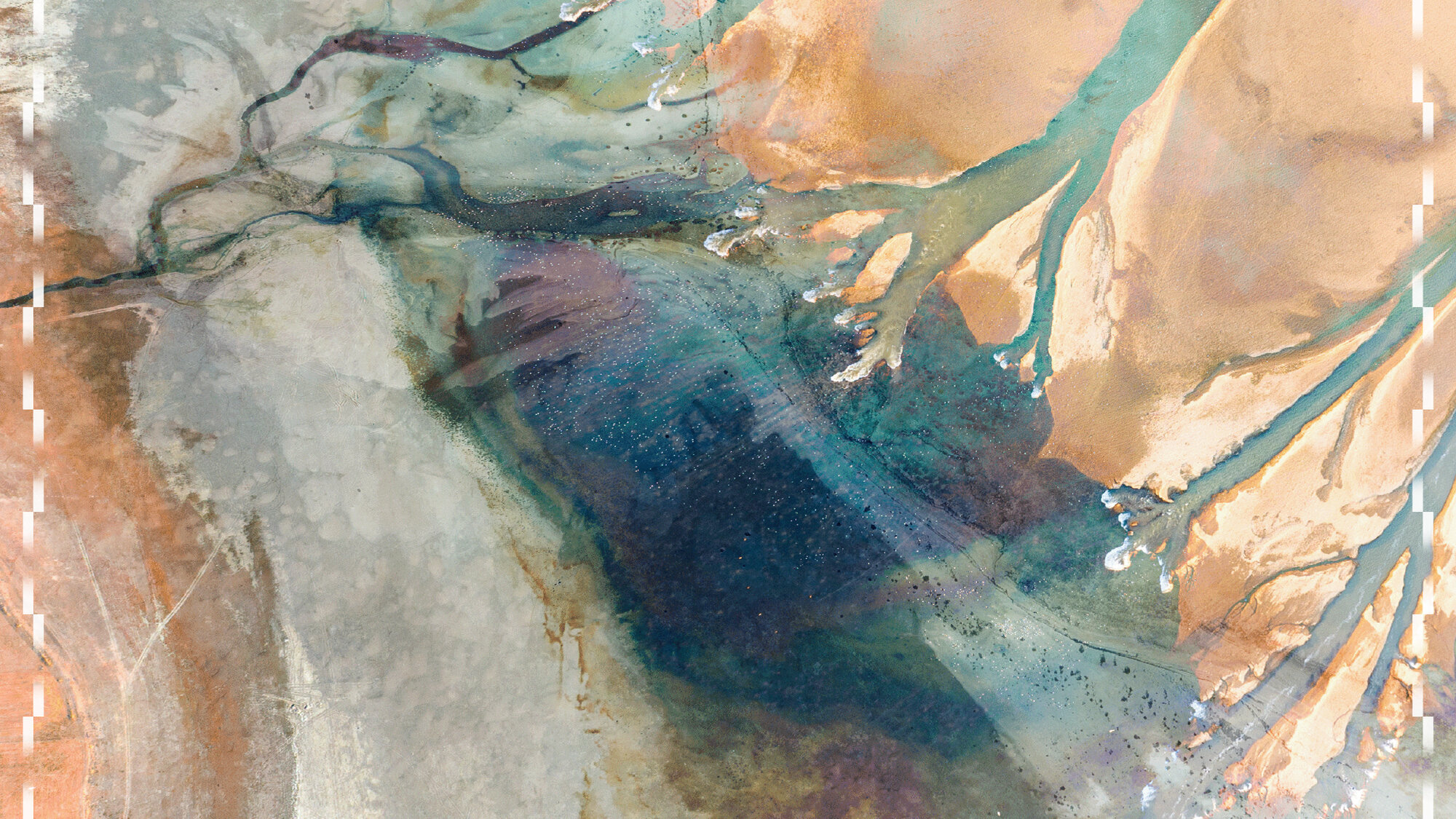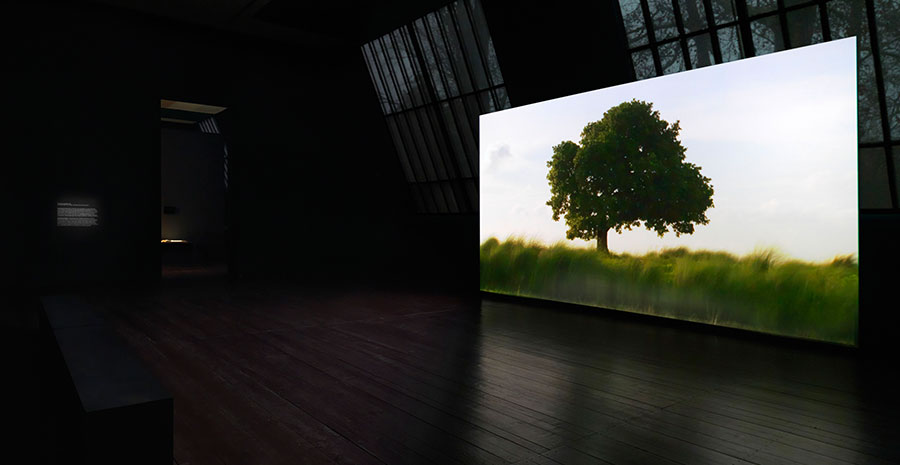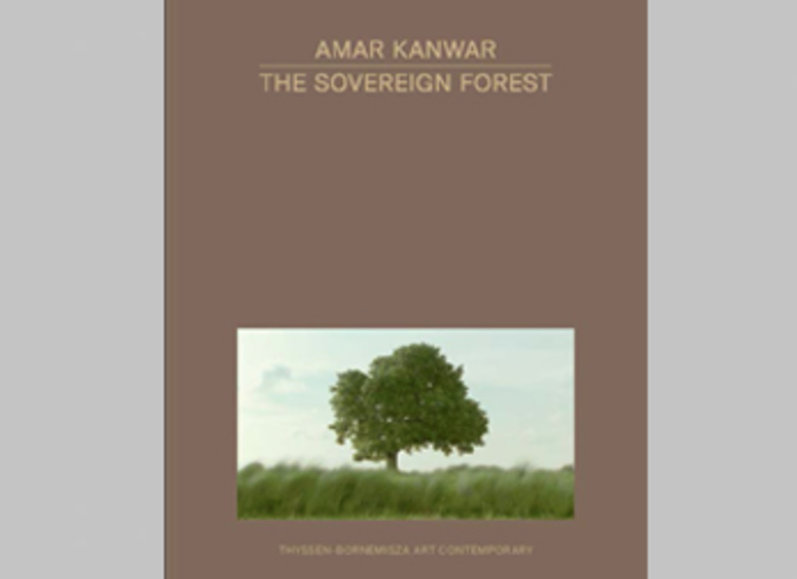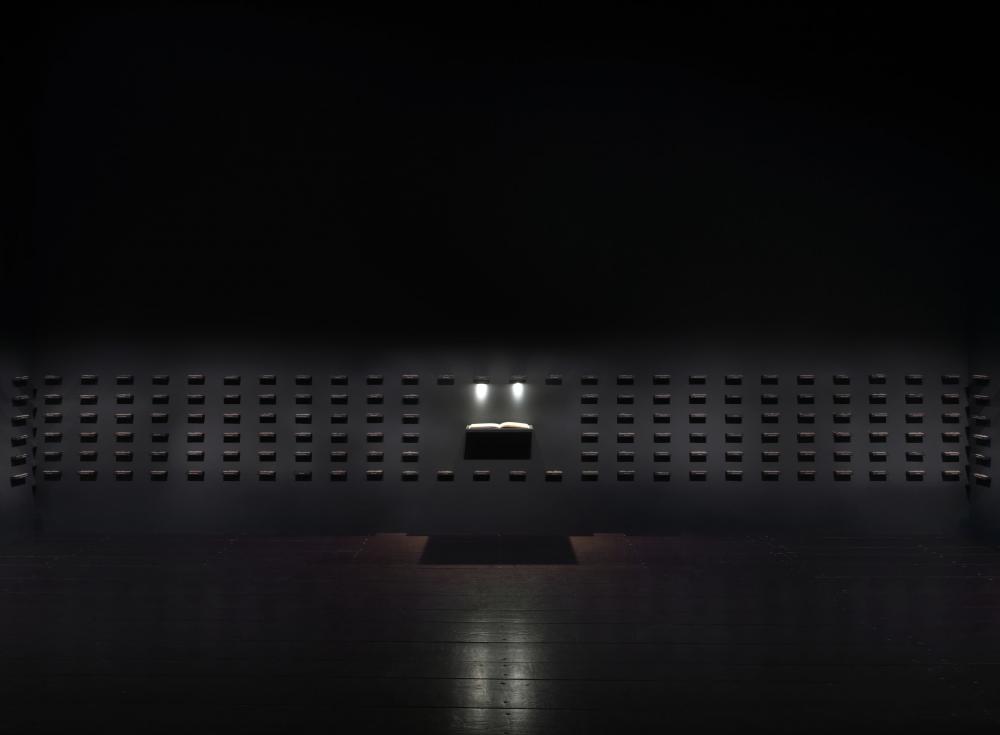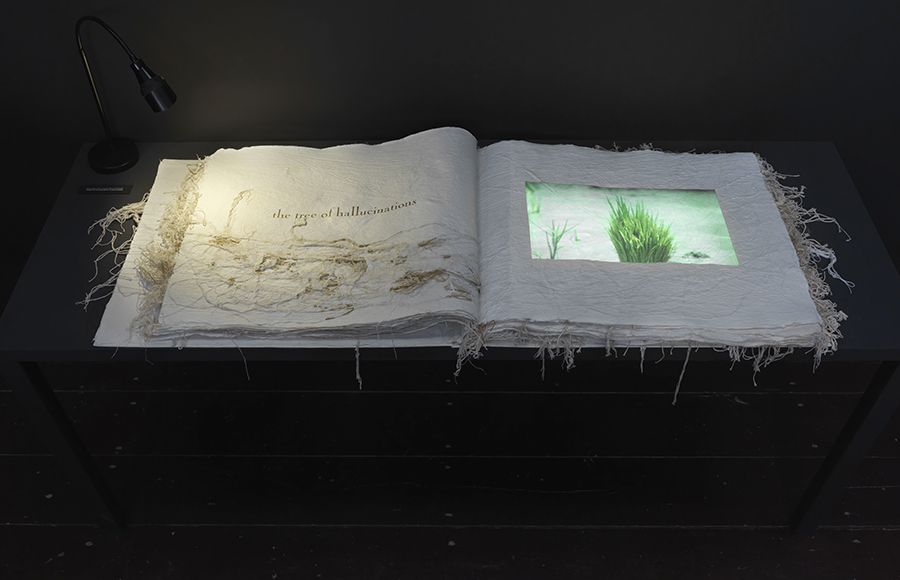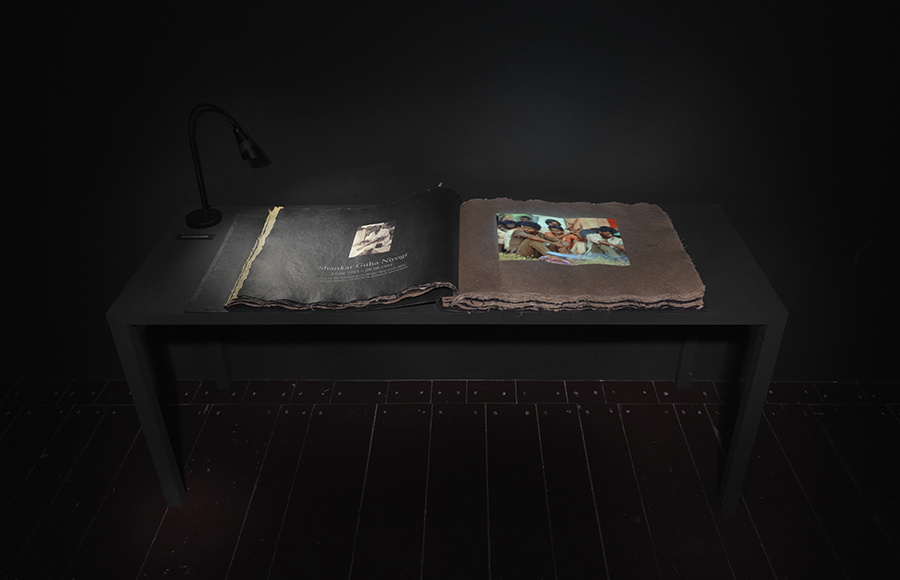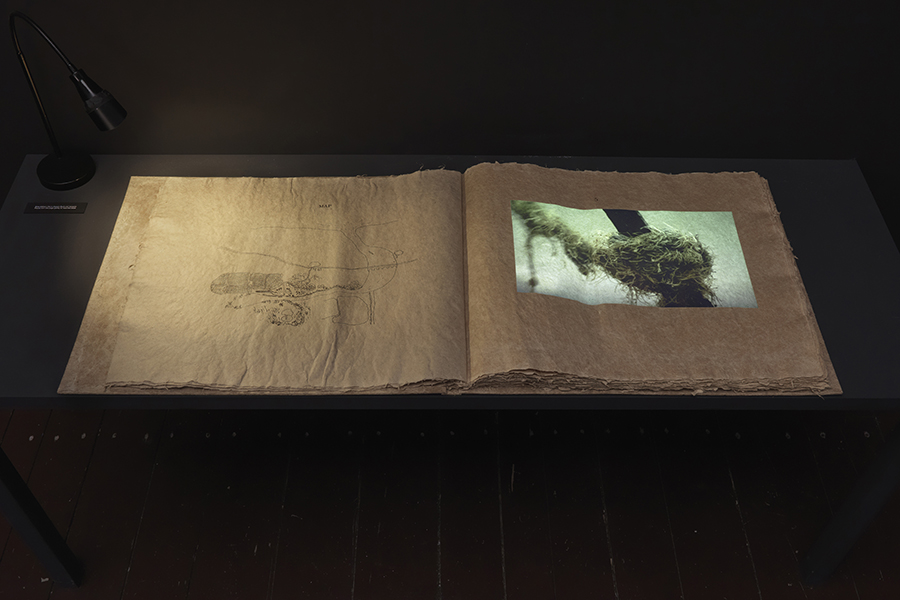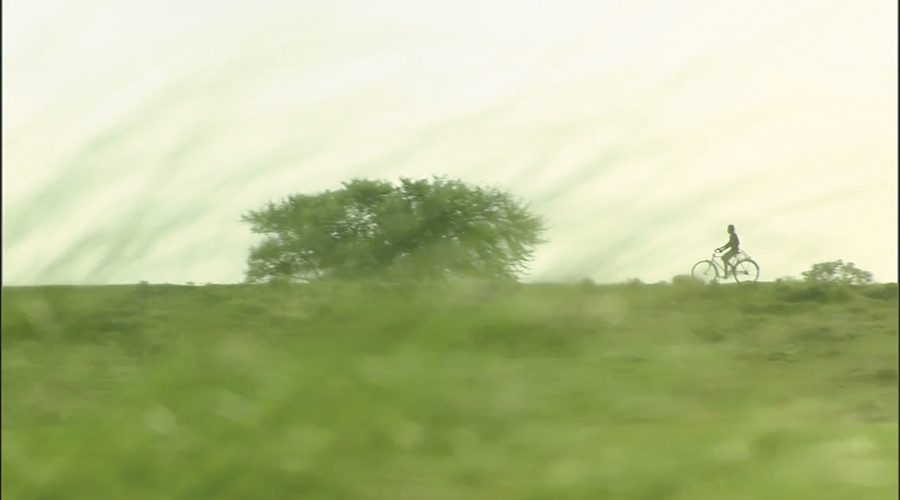The filmic work made by the Indian filmmaker
Amar Kanwar over the past two decades has presented a profound interrogation of the politics of power, violence, and justice.
The Sovereign Forest (2011–) emerges from the conflict in Odisha, India, between local communities, the government, and corporations. For more than a decade Kanwar has been filming the industrial interventions that have reshaped and permanently destroyed parts of the state’s landscape. Since the 1990s Odisha has been a battleground on issues of development and displacement, as national and international corporations have established large-scale mining and industrial sites in various parts of the traditionally agrarian state.
“The validity of poetry as evidence in a trial; the discourse on seeing, on understanding, on compassion, on issues of justice; sovereignty and the determination of the self—all come together in a constellation of moving and still images, texts, books, pamphlets, albums, music, objects, seeds, events and processes.” (Amar Kanwar)
Amar Kanwar has been filming the industrial interventions that have reshaped and permanently destroyed parts of the landscape of Odisha for over a decade. Since the 1990s national and international corporations have established large-scale mining and industrial sites in various parts of the traditionally agrarian state. Rich bauxite and iron ore deposits have been transformed into gigantic extraction sites, connected to large-scale infrastructural investments. The resulting conflicts between local communities, the government, and corporations over the control of agricultural lands, forests, rivers, and minerals, have led to the forcible displacement of indigenous communities, farmers and fisherfolk and have engendered an ongoing regimen of violence, oppression, and brutality that is random, unpredictable, disruptive, and invisible.
The Sovereign Forest renders visible and collects evidence of what has hitherto been hidden and suppressed within the site of this “modern war”. Rather than taking a documentary and evidentiary look at the crime as “it is actually happening,” Kanwar orchestrates actual found and collected images, traces, and records into something that surpasses fact, revealing a richer, more fluid and poetic perspective on reality and on “the meaning of what is happening.” Engaging the viewer in manifold ways of “seeing” and comprehending,
The Sovereign Forest thus harnesses a set of propositions that investigates the notion of “poetry as evidence.” Poetry carries the ability to express multiple and contingent relationships between violence, memory, and language or, more specifically, to create different vocabularies to express different memories, different faculties of archiving, of telling a story.
The Sovereign Forest is more than an exhibition now; it is a constantly mutating and metamorphosing institution, initiated and supported by several collaborations with artists, activists, journalists and farmers in India. TBA21 has been supporting the artist with
The Sovereign Forest since 2010, after having worked closely with Amar Kanwar since 2006 when co-producing
The Lightning Testimonies in New Delhi together with Public Press. On this occasion TBA21 also acquired
A Night of Prophecy and in 2008, TBA21 and Public Press co-commissioned the artist to produce the 19-channel video installation
The Torn First Pages.
The Sovereign Forest engages multiple faculties of seeing, perceiving, understanding, registering, and evidencing— a process wherein the definitions of evidence, sovereignty, and truth start to crumble and to reemerge from their own fragility and porosity. Challenging legally permissible evidence and the institutional and conventional limits of the archive,
The Sovereign Forest acts as a library of evidence, containing:
a] Formal pictorial evidence;
b] ‘Found’ pictorial evidence;
c] The evidence of the timeless local fable, scripted and visible in printed words and woven together with embedded personal objects like a fishing net, a cloth, leaves etc. titled
The Counting Sisters and Other Stories (large handmade book with paper made from the fiber of the banana tree.)
d] Formal factual evidence and the legal archive (from an old scene of crime and a completed trial spanning two decades. The book is titled
The Prediction and is about the assassination of the trade union leader and farmer Shankar Guha Niyogi in 1991.)
e] A book with no words. A similar large handmade book, with printed chapter titles but without any texts within, titled
The Constitution. With embedded thread and textures, visible to the eye, different when touched and magical when back lit, this book without words can still be read, experienced for long. Each chapter title locating trajectories of wisdom missing from formal national constitutions;
f] The evidence of 272 varieties of rice seeds, indexed and presented in the language of a formal archive but also indexing and presenting generations of noncommercial, non-marketed, unrecorded intangible oral knowledge;
g] Accumulated evidence as personal contributions to
The Sovereign Forest, from within Odisha during the one year that it has been permanently on view locally in Bhubaneswar (official documents, images and drawings).
The Scene of Crime (2011), the filmic work at the center of
The Sovereign Forest, offers an experience of landscape just prior to erasure as territories are marked for acquisition by industry, interweaving various narrative threads with modes of image making, text inserts, and divergent temporalities that unfold in “a passage towards a more interconnected multiple relationship with the world.” The documentary and archival images of Odisha’s breathtaking landscapes and its inhabitants, captured with poetic sensibility and intimate precision, appear in a distinct reduction of sound and speed. The zones of light and color arise in different shades and scales of time, overlapping with, yet remaining outside of viewers’ time and space, allowing the gaze to explore the lush beauty of the landscape whilst opening up fissures for reflection, for the search for submerged evidence. The film “re-relates and brings to the center a set of experiences, a set of understandings, a set of senses, a set of testimonies that has been dropped by the side or not given any value or importance.” The film combines with a unique constellation wherein the index of evidence, presented along with the scene of crime, shifts from modality to modality, from multiple modes of expression that undo the divisions of formal, found, factual, objective, fictional, narrated, and invented into a new library of evidence that acts to delegitimize or rather re-legitimize the terms of definitions.
About Amar KanwarAmar Kanwar was born in 1964 in New Delhi. He started making films directly after entering Film school at the Mass Communications Research Centre of Jamia Millia Islamia University, Delhi. It was also during these years that he began to engage with political and social activism. The artist lives and works in New Delhi.
Poetically interweaving narration, image and sound, Kanwar’s distinct artistic style allowed him to document, rather than simply ‘expose’ the absurd, yet historically solidified scars and rituals of separation as well as the violence, hopes and dreams of the people affected. Kanwar’s following projects include
Earth as Witness (1994), a film made for the Tibetan government-in-exile,
A Season Outside (1997), focusing on the Indian-Pakistani border post at Wagah, the single-channel film
A Night of Prophecy (2002), an episodic visual compendium of Indian protest poetry that premiered at documenta 11; the multi-channel installations
The Torn First Pages (2004) dedicated to Ko Than Htay, a Mandalay book dealer imprisoned for sedition and seeking to create an understanding of the multiple dimensions of the Burmese democracy movement; the multi-channel installation
The Lightning Testimonies (2007) that recorded the different cultures of remembrance in relation to India’s history of sexual violence and abduction; finally,
The Sovereign Forest (2011), an ongoing research project, which explores the social and environmental impact of mining on the local community in Odisha, India.
TBA21 has been working closely with Amar Kanwar since 2006 when co-producing
The Lightning Testimonies in New Delhi together with Public Press.



































